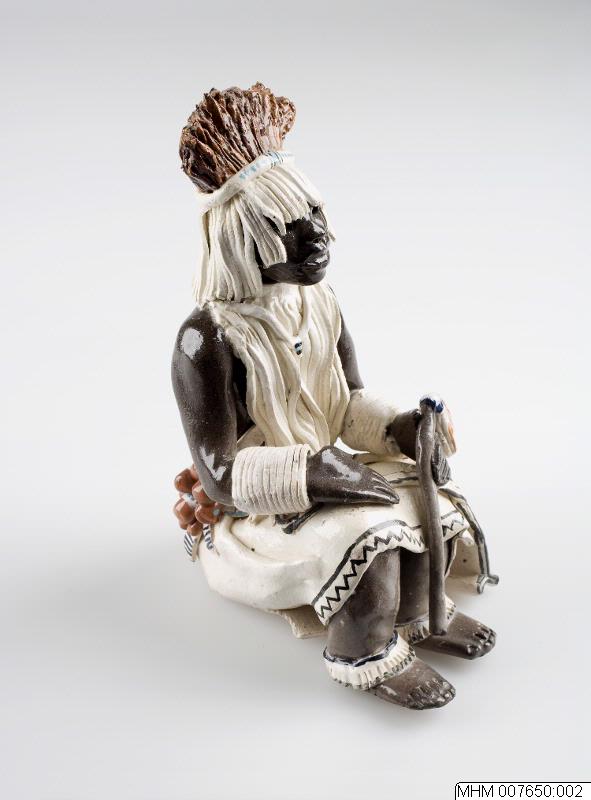MHM 007650:002
::
figur

- Object description
Figur föreställande en sittande mansperson iklädd vit klädnad. På
huvudet en huvudbonad med bruna fjädrar? och vita tygremsor. Runt
handlederna vita armband och runt vristerna vita och mörkblå prydnader.
I vänster hand håller han antagligen en viska. I botten signerad
Elisabeth Rowland 1976.
I botten på statyetten finns ett hålrum där en hoprullad papperslapp
sitter och på den står det: "Witchdocters undergo a long training before
they are fully qulified to / practise on their own and undertake to
train younger ones. Very often a / boy or a girl is picked out in
childhood because of something abnormal about / him, and apprenticed to
a doct or as acolyte. This training is dangerous / to break away from
because all sorts of secret herbs and drugs, / many of them highly
hallucinatory are used during the train- / ing to develop latent
clairadudienr and clairvoyant powers. It is said with / some truth that
to break away means madness. The withdrawl symptons would / be terrible.
Witchdoctors wear animalskin caps and white clothing and white /
beadwork. White is the mystic colour of purity and protection among the
/ Xhosa and white cloth and clay and beads are part of all magic rites.
The / doctors are highly skilled in healing arts, in communication with
the / tribal ancestors, who stand between their descendast and God, and
whose / intercession is demanded in all matters of tribal and family
importance. These doctors all wear white beads upon their right wrists
which shows / - among other signs, that they have had the correct sort
of visions before / being admitted to the brotherhood. They carry bagsm
gourds and things / containing their herbs, bones and other cures. They
caharge fairly stiffly / for their services and are never poor men. All
are men of great character / and generally of integrity too.

Leave a comment
You can comment on the object here. We moderate all comments before publishing.